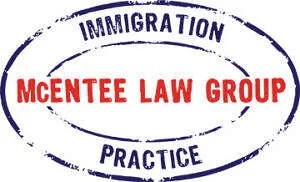Blog
Insider's Guide to Handling a Request for Evidence: Key Strategies and Tips
Last Updated:
February 9, 2024
Last Updated:
May 13, 2025
Blog
Last Updated:
February 9, 2024
Last Updated:
May 13, 2025

A part of our job as immigration attorneys is to respond to Requests for Evidence (RFE) issued by the USCIS. RFE is an official request issued by USCIS to an applicant or petitioner when the USCIS determines that it needs additional documentation or information to make a decision on the case. This article will explain how to respond to USCIS Requests for Evidence (RFE) with practical tips for attorneys and petitioners alike.
RFEs are common in the immigration process and are issued to gather more information, supporting or personal documents, forms, seek clarification, or resolve any doubts or concerns regarding a pending application or petition.
Sometimes, RFEs ask for the documentation that was already provided to the USCIS, and sometimes, RFEs mistakenly ask for irrelevant documentation.
Regardless of what RFE you receive in your particular case, the first and most important thing to do is to read the RFE carefully to understand what the USCIS is requesting and what deadline it sets for your response.
Pay attention to any specific instructions the RFE contains. It is essential to follow the instructions as they may outline a specific format for the response.
Meeting the deadline set in the RFE is extremely important. The RFE will indicate a deadline by which you must respond to it. Failure to respond to the RFE in a timely manner may result in the denial of the case altogether.
If you're unsure about how to respond to the RFE or if you have complex issues in your case, consult with an experienced immigration attorney soon after you receive the RFE as it will take time for an attorney to understand your case and respond to the RFE.Do not wait until the last day to respond to the RFE, instead, plan in advance and also allow some additional time for the postal service to deliver your response to the USCIS.If you think the USCIS is asking for something that you have already provided, our recommendation is to respond to the RFE and not ignore it just because what the RFE is asking for was already provided.
Include a cover letter in your response. A cover letter will allow you to argue your position, describe your documentation, and address all concerns that the USCIS outlined in the RFE.
Your cover letter should contain your case number, your name, and your alien registration number (if any). The letter should be clear and concise.
Remember to explain how your evidence addresses each particular part of the RFE. For example, if the RFE is asking you to provide a copy of your U.S. marriage certificate again, ensure that it conforms to the requirements of the State that issued it, make a clear copy of the marriage certificate, and provide it again.If the RFE is asking you to provide an immigration form that you think you have already provided, always make sure that you provide the signed form again.
When you have your RFE response ready to go, make a copy or scan of your entire response with a copy of the RFE for your records.
We prefer sending our RFE responses through certified mail or courier, and we recommend that you do the same. Keep the tracking number to track the delivery and check on the delivery of your response within a week of sending it out.To make sure that your RFE was received by the USCIS, you may call the USCIS or chat with EMMA.
Remember that RFEs can be different. Sometimes, they are straightforward and easy to understand and respond to, and sometimes the RFEs are tricky and/or contain legal language that could be hard to understand for a non-attorney.
If you're unsure about any aspect of the RFE or how to respond, contact an immigration attorney to assist you with the response.

Sign up for the latest below! [button link="https://app.lawmatics.com/forms/share/32f35b76-b237-4c4f-8a9d-75317e0ed6f2" newwindow="yes"] connect with us[/button]